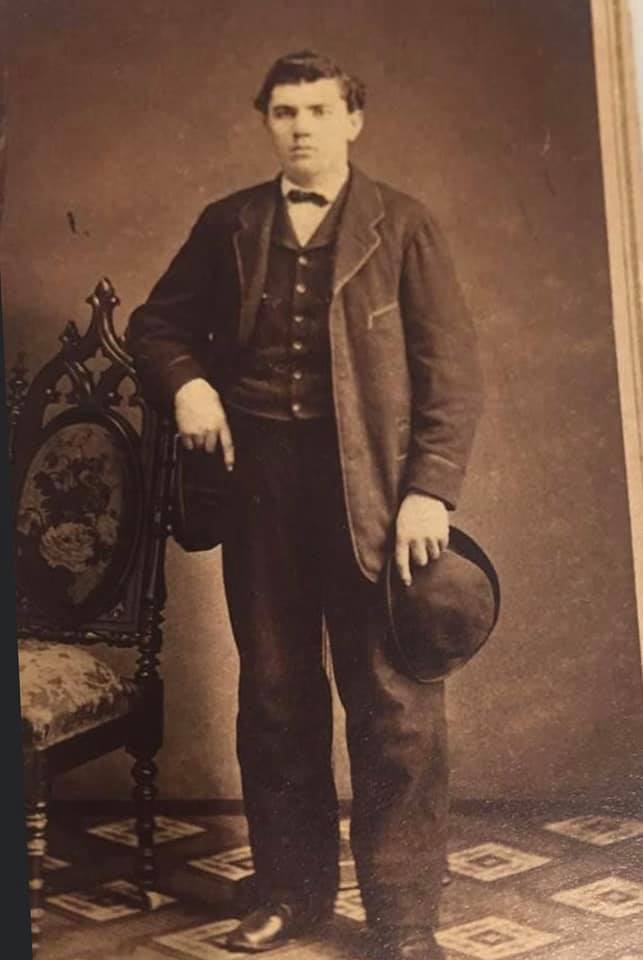BATAVIA, Ohio — Batavia residents are fighting to save an 1890s carriage house from possible demolition so that Clermont County Commissioners can add four new parking spots.
Nearly 2,400 residents have signed a petition to save the carriage house. It was built by German immigrant and blacksmith Karl Hoerner behind his tavern on Batavia’s Main Street, where he and his wife raised eight children upstairs.
The county owns the carriage house and uses it for storage.
Commissioners are considering several options for its future, including demolition. They want to expand parking for county tax, administrative and board of elections offices which are all housed in Batavia, since it is the county seat.

“This would be a true slap in the face,” said Cindy Johnson, secretary of the Clermont County Historical Society. “I’m horrified … There’s lots of parking. There’s not lots of carriage houses.”
In a joint statement to WCPO, the Clermont County Commissioners wrote in part, “We are weighing all options regarding the carriage house. No decisions have been made. A number of factors must be considered, including the fact that the building sits in an area where citizens doing business with the county park and enter and leave. Also, we will weigh the fact that this is not a historic landmark due to extensive renovation to the interior over the years.”

While the simple exterior of the brick carriage house is unchanged, the county has added modern heat and air conditioning, carpet, drywall, skylights, a ramp and other amenities over the years.
“People ask me all the time, 'Why isn’t it on the historical registry?' Well, as you know, you have so much of the original building in place to qualify for that,” said Wade Grabowski, director of Clermont County Facilities Management Department.
Grabowski gave a presentation on the carriage house at a Nov. 17 commissioner meeting, which was filled with residents who were concerned about its fate.
County officials have been debating the future of the carriage house for more than a year, deciding if it should be sold, demolished, renovated, or dismantled and moved elsewhere. It would cost $34,000 to demolish the building.

“I think the village residents and the community would like to see their town stay historical and preserved and I don’t know that the county shares that same sentiment,” said Courtney Huber, who bought two historic buildings on Main Street from the county last year that were also slated for demolition.
She renovated one of the buildings with her husband, Adam, and rented it to a boutique owner. They are now renovating Hoerner’s original tavern, which will house a communal workspace, Zeal Collective, in February.

The carriage house is directly behind the old tavern. She said county officials approached her about buying the carriage house last year, which she readily agreed to, but then they went silent on the deal. When she heard rumors about its demolition, she started the petition to save it.
“It’s a very, very cool building. It’s in really good condition,” said Huber, who has toured the inside. “The county has covered it with cosmetic 1990s sort of things, but once you remove all of that, the original building is still there … It has all of the original beams throughout … the original staircase is there.”

Huber wants to turn the carriage house into an event space and even has a renter who is interested.
“I feel like Clermont County should be a little more involved in keeping this a historical village,” Huber said. “We would like to buy as many of these rundown vacant buildings as we possibly can.”

But commissioners are also considering the county’s parking needs. The carriage house sits in the middle of a parking lot used for county offices.
“This campus here, you know, obviously needs parking space. It needs the ability to have drive-thru space for paying taxes and things like that, like other counties do,” Commissioner David Painter said at the Nov. 17 meeting.

“The commissioners welcome input from the public to ensure that all options are considered,” Painter wrote in a statement to WCPO. “Although the building is not listed as a historical structure, it is clear that residents want every option considered that might result in continued use of the carriage house. There is time to ensure that the right decision is made after weighing all the options.”
Commissioners have not said when they will make a decision. In the meantime, two incoming Batavia village council members are actively voicing their opposition to the demolition.

“What we want to do is make sure that they understand and hear the voices of their constituents in Clermont County on this matter,” said incoming councilman David Pryor. “Small-town charm is becoming more in demand and desirable. Buildings like the carriage house create a sense of nostalgia and connecting you to the past, but also with modernized amenities.”
Batavia officials are trying to revitalize the village and want to restore historic buildings as storefronts for boutiques, coffee shops and restaurants, to create a vibrant Main Street.

“We have a finite amount of buildings left in this village and we want to try and keep as many historical buildings as we can,” said incoming Batavia councilman Scott Runck. “We’re in competition with a lot of other villages or incorporated areas like Loveland and Milford. And if you just go down their streets, you’ll see how much history is on their streets and how many buildings they have kept.”






